- Honda goals for aero-savvy EV shapes—and SUVs—with upcoming Sequence 0 platform
- 0 Sequence boasts an air suspension and 3D gyro tech from robots
- Radiant warmth and a warmth pump will assist keep vary edge in winter
Final week, at Honda’s R&D facility in Tochigi, Japan, I caught up on all of the engineering work that’s gone into remaking Hondas as electrical, culminating in about 10 minutes of dynamic driver’s seat time in a 0 Sequence EV in disguise.
It gave me a solution to a query I merely couldn’t get out of my thoughts: How can a automotive as low and racy-looking because the Honda Saloon idea have a form that’s practically production-bound?
In January at CES, Honda revealed the House-Hub and Saloon EV ideas. And amongst them, the Saloon EV’s supercar-like kammback profile seemingly stole the present—particularly after executives claimed its poster-car look was practically production-bound.
It underscores some extent: Constructing a brand new technology of environment friendly, aggressive battery and propulsion programs isn’t the one problem that legacy automakers face in shifting to electrical automobiles. The even higher take a look at could be how the remainder of the automobile—the highest hat, in trade parlance—is conceived round it.
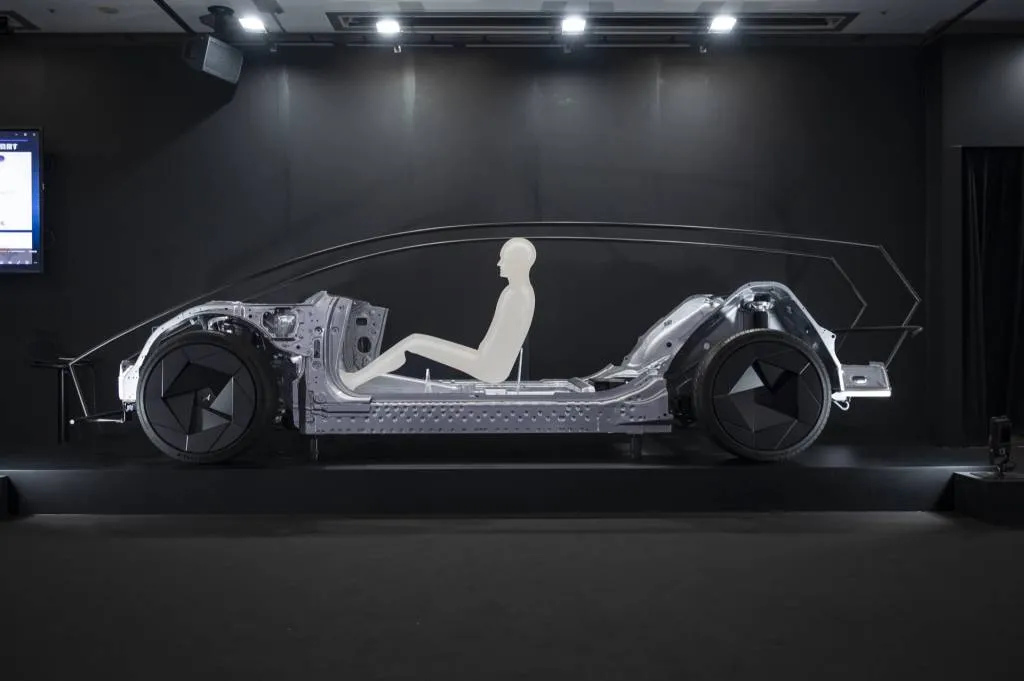
Honda 0 Sequence EV platform
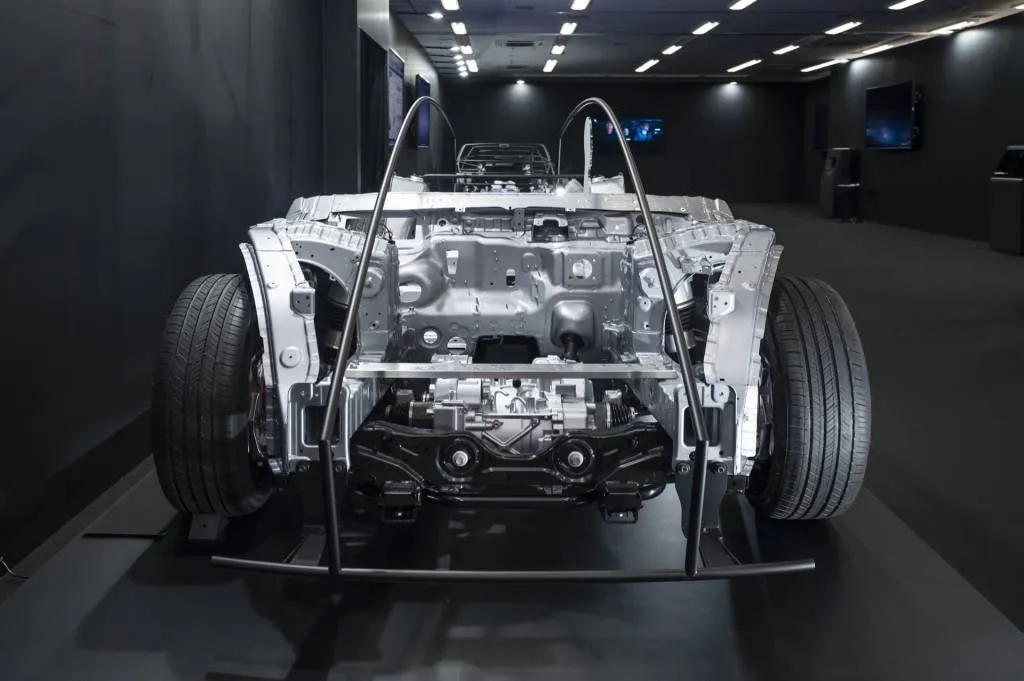
Honda 0 Sequence EV platform
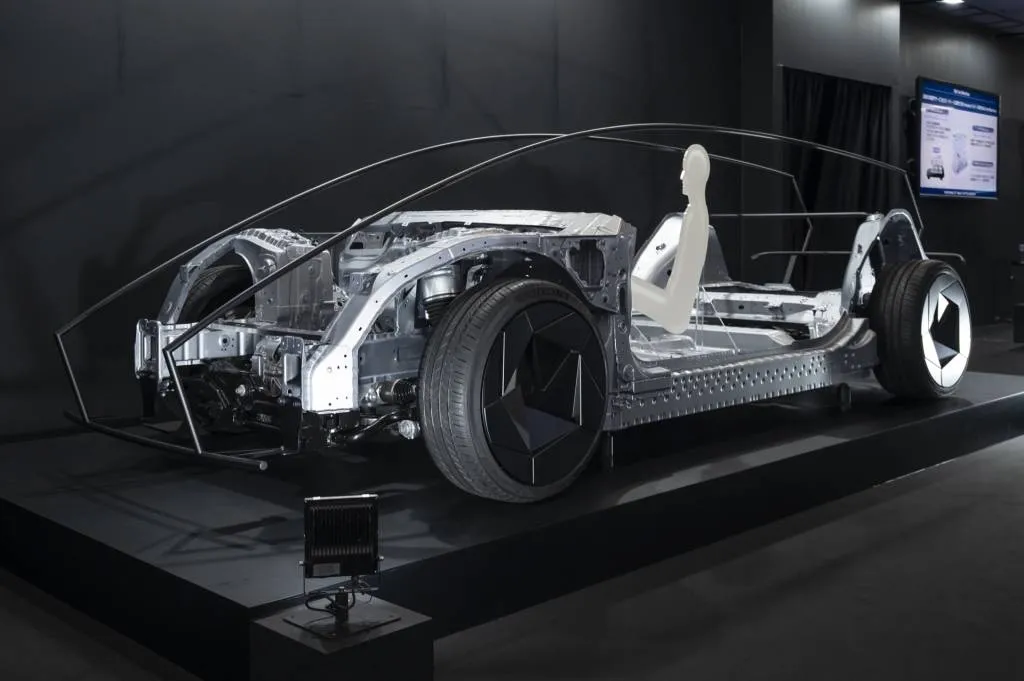
Honda 0 Sequence EV platform
Getting such a profile to work in opposition to the headwinds of crash-test requirements, roomy passenger cabins, and the established order of passenger EV layouts is the puzzle Honda says it will possibly deal with. And it’s simply the automotive for Honda to put out in profile as the instance for why it’s taken on a “skinny, mild, and smart” technique in engineering these upcoming 0 Sequence EVs. They sign a contemporary begin because it seems previous the GM-supplier Prologue and forward to its first household of completely Honda-engineered mass-production EVs, as a result of be made in Ohio beginning in late 2025.
The primary two of these EVs to reach shall be an Acura crossover, previewed by the Efficiency EV idea proven in August, then a production-bound model of the Saloon idea.
Whereas Honda isn’t completely prepared to indicate that particularly rakish future in manufacturing kind, it’s prepared to present us a way of all of the work beneath.
Again at CES, the automaker offered lots of details about what Honda 0 Sequence EVs will (and gained’t) be, and it underscored that these fashions gained’t be Accords, Civics, CR-Vs, or area of interest fashions. Basically, between EVs on one facet and gasoline fashions, hybrids, and possibly plug-in hybrids on the opposite, Except for its electronics platform and person interface, Honda doesn’t plan to overlap its EV construction and platform with gasoline and hybrid fashions.
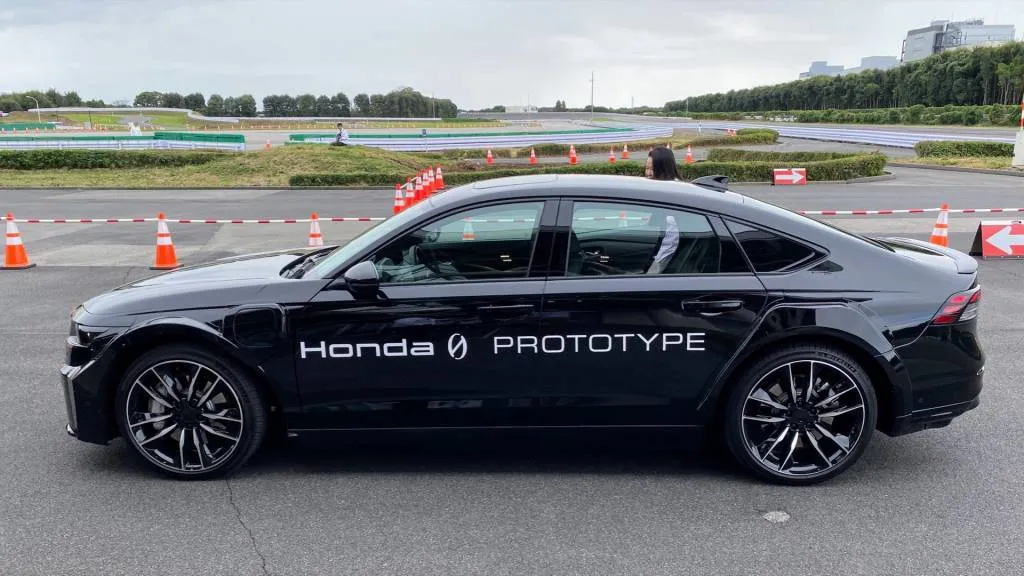
Honda 0 Sequence platform prototype (Accord)
So it appears ironic that right here I used to be, set to drive some key facets of Honda’s 0 Sequence platform in both an Accord or a CR-V—together with the ground and battery case, in addition to the 0 Sequence suspension. Each of the automobiles obtained tuning of the suspension and drive programs to adapt it to their very own weight distributions, however I headed straight for the Accord after a tip that it might present the perfect preview of 0 Sequence driving dynamics.
Honda challenges “thick and heavy” as the idea for EVs
Honda says that by emphasizing “skinny, mild, and smart,” it goals to transcend the constraints of getting an EV be a “thick and heavy” automobile. Too usually, thick battery packs with cumbersome cooling programs and physique buildings supposed to satisfy sedans and SUVs within the center quantity to packaging that doesn’t work so nicely for something on the extremes.
With lively aero and a low profile, the Honda Saloon idea guarantees higher aerodynamics than some other manufacturing automotive, in addition to an general top that may very well be lower than 55 inches whereas nonetheless maximizing inside house for adults.
The way it obtained there meant first conceiving a skinny, super-low battery pack that acts as a structural member. Slimmed-down e-axles, mixed with an aluminum-focused physique construction, holds its mass near the center of the automobile. Honda has additionally reeled in overhangs, and it’s rethought the way in which physique flex on the entrance and rear elements into the suspension, permitting much less lateral rigidity than present automobile conference. Honda says that cuts weight and leads to extra nimble driving.
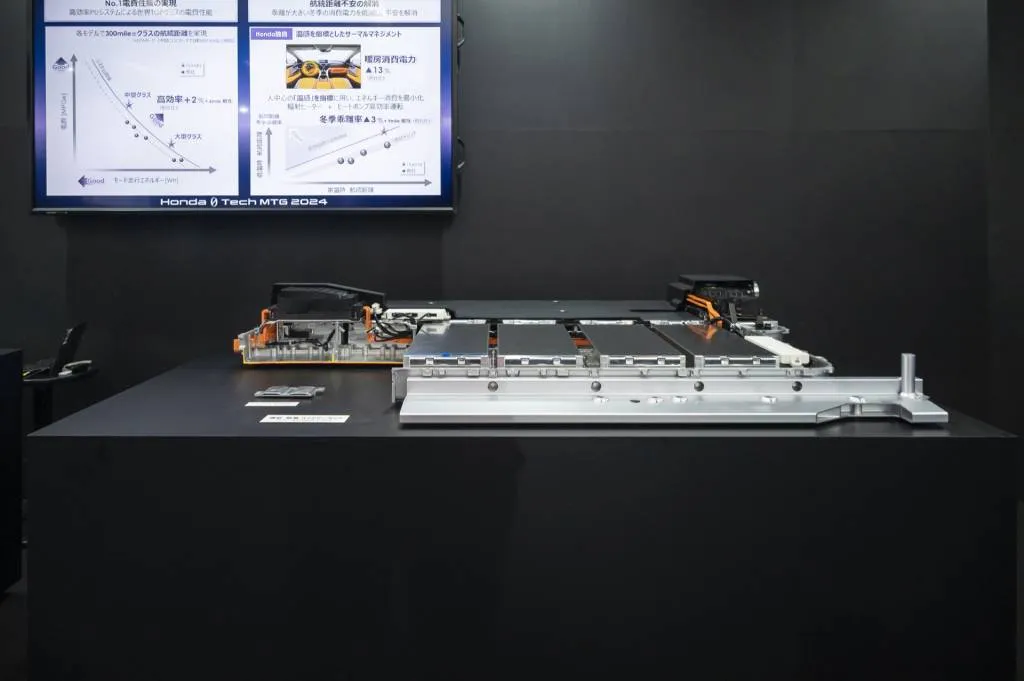
Honda 0 Sequence EV platform
That battery pack is a part of a so-called Built-in Energy Unit that acts because the battery case and an integral a part of the platform’s physique construction. It’s girded with thick rails that along with the pack itself act as a structural member of the automobile and improve facet influence safety.
A part of what permits the decrease hoodline and aero profile is a physique construction beneath that wasn’t conceived to permit for engines in entrance. Frontal offset pressure paths join via to these thick rails in a approach that takes away the necessity for increased cowl crossmembers.
Honda 0 Sequence fashions shall be all-wheel drive or rear-wheel drive. Up to now, Honda has a 180-kw (241-hp) electrical drive unit and a 50-kw (67-hp) unit that’s shared with its two-mode hybrids. It says the e-Axle is 40% smaller versus a composite common of present rival models from OEM suppliers. Honda labels these e-axles as proprietary, though they’re constructed by companion Hitachi Astemo, of which Honda owns a majority stake.
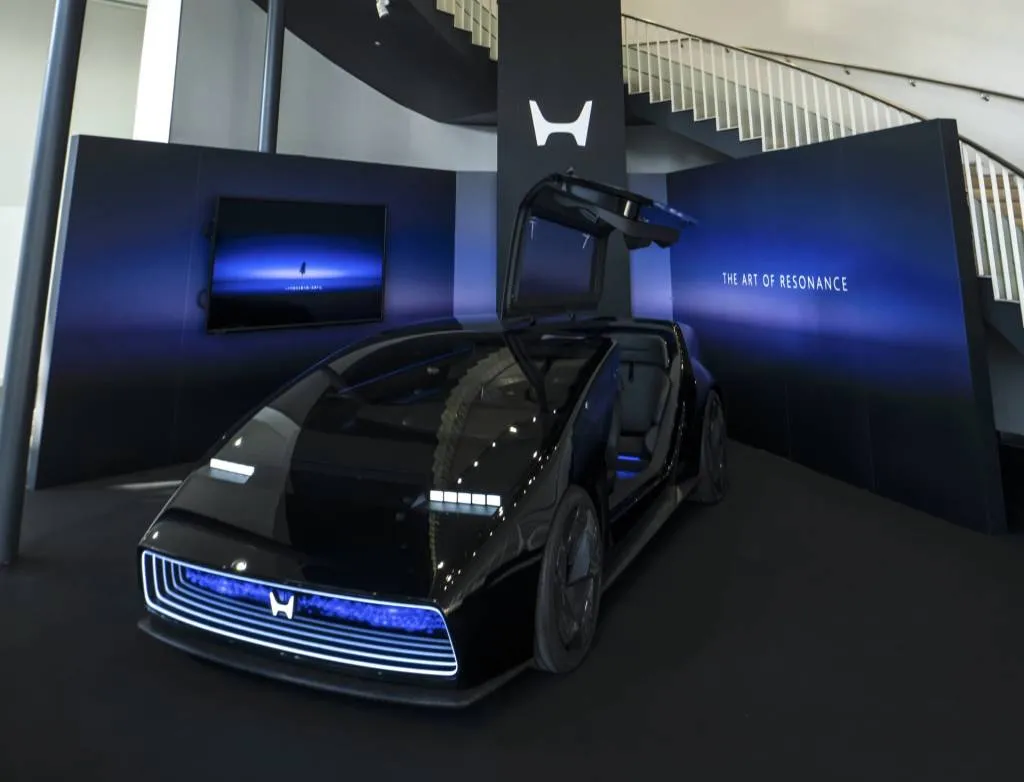
Honda Saloon EV idea

Honda Saloon EV idea
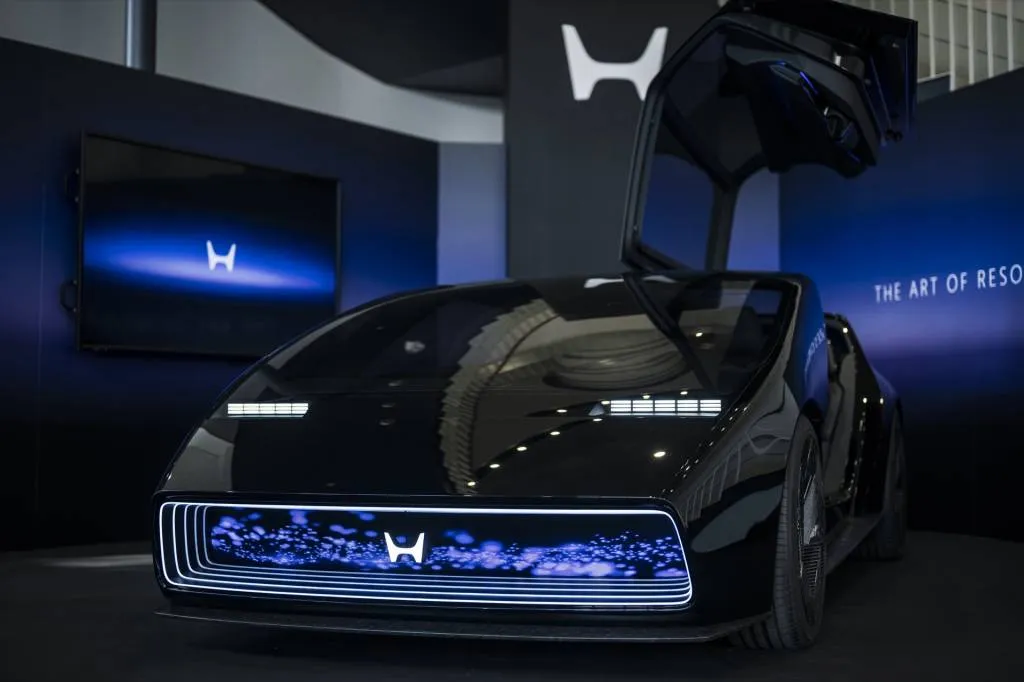
Honda Saloon EV idea
Honda 0 Sequence goals for 300 miles
Given all of this, Honda goals to realize “round 300 miles” throughout varied 0 Sequence fashions, by way of EPA cycle vary, with battery pack sizes various to satisfy that. With a radiant heater and warmth pump, Honda says the 0 Sequence reduces heating energy consumption by 13%, with a decrease winter-weather vary deviation than rival fashions.
Honda additionally guarantees that the 0 Sequence shall be 2% extra environment friendly than rivals—a composite common of them—by way of vary per power. With out seeing particular examples (like Tesla, and Lucid) factored in, it’s troublesome to anticipate the place Honda may land.
The Accord I drove had two of those 241-hp models, amounting to an output probably topping 480 hp, though Honda officers wouldn’t verify if the models have been making their peak output right here. Honda had no replace on core specs just like the battery capability, but it surely confirmed that modules shall be solely within the pouch format—provided by a Honda three way partnership with LG. Honda additionally hasn’t offered figures for cost charges, and even verify whether or not these EVs will function at 400 volts or 800 volts, but it surely promised that later variations of the 0 Sequence arriving in a number of years will be capable to cost from 15-80% in simply 10-Quarter-hour (suggesting 800-volt charging) and can lose not more than 10% of the unique battery capability after 10 years of use.
These fashions will get battery cells via an association with LG and provided through an LG three way partnership with Honda in Ohio. Honda hasn’t but detailed what number of cells are put in per module, but it surely clarified that its battery administration system is a wired one and displays resistance on the cell stage.

Honda 0 Sequence platform prototype (Accord)
Honda 0 Sequence prototype fast spin
Again to the preview: What I’m driving in offers the face-value impression that it’s an Accord—with some growth controls, and a skinny show display screen fitted to it trying nothing just like the huge show house of the Saloon idea. However I’m assured that a few of what I’m driving on is in some facets close-to-final-form 0 Sequence.
I roll out from the staging space onto the straight of the small highway course and roll into the accelerator, reaching the ground momentarily earlier than I cautiously tackle the course’s curves. As I rapidly be taught, this is perhaps a heavier EV, but it surely feels extra nimble and balanced than a typical Accord. A second and third time with a nod from my development-engineer passenger, I push it a bit sooner within the straight than the speeds initially supposed for the train, ultimately reaching about 75 mph. The propulsion system is remarkably quiet even then.
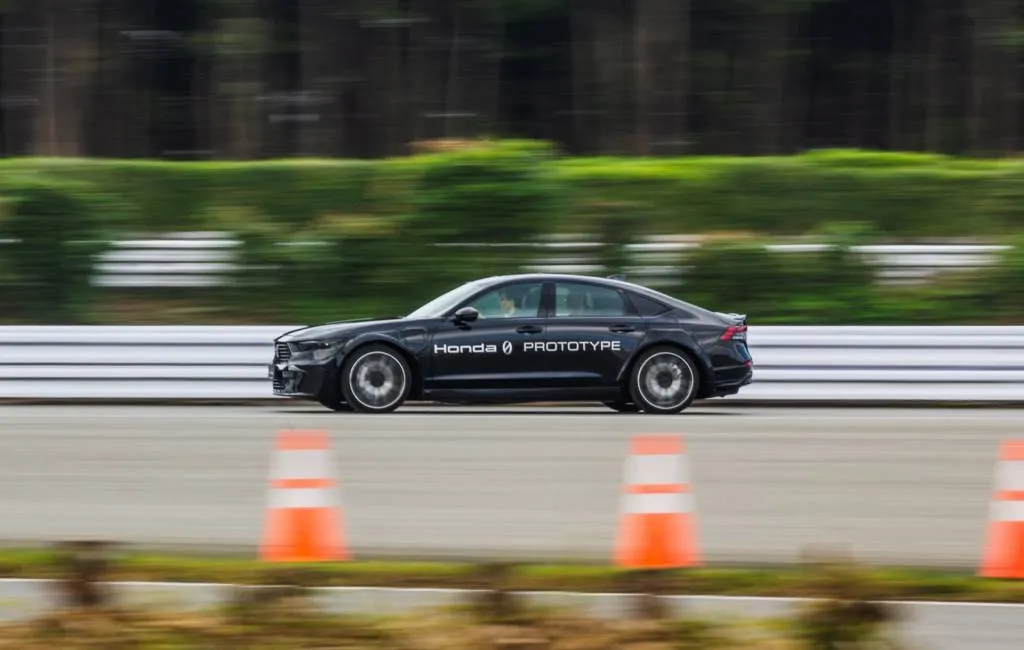
Honda Sequence 0 prototype (Accord)
Total, this feels each bit as fast because the quickest mainstream AWD EVs—all aside from these with Plaid, Efficiency, or N badging. In the meantime the motors are delivering their torque freed from vibration, they usually really feel in sync with the steadiness management and physique management.
This Accord-based 0 Sequence prototype isn’t fitted with the manufacturing automotive’s steer-by-wire system. It’s additionally not a production-level braking configuration, and it solely has one stage of brake regen—a reasonable one which scrubs off some velocity however positively requires the brake pedal. Honda additionally wouldn’t verify the capability of the battery pack on this prototype, whether or not it’s near that of a manufacturing model in weight, or how a lot heavier it’s than an Accord. It was confirmed that the prototype is heavier than a gasoline Accord, although.
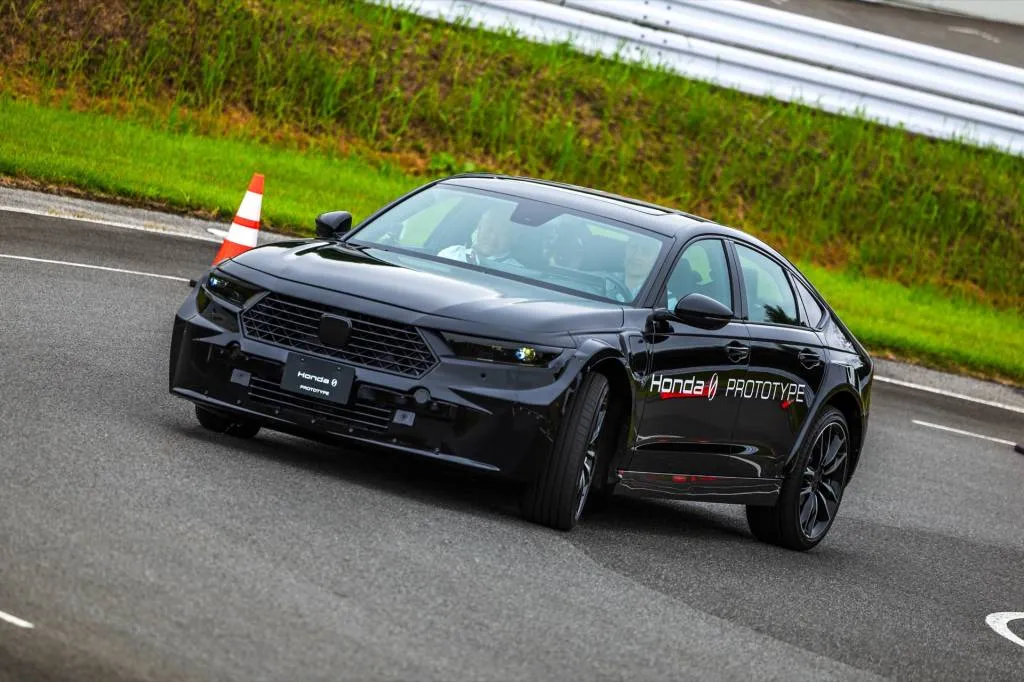
Honda Sequence 0 prototype (Accord)
0 Sequence prototype handles higher than an Accord
What it does have is the 0 Sequence’ air suspension, with air-spring struts in entrance and a multi-link setup with air springs in again. It additionally will get the 0 Sequence’ stability system and physique controls incorporating 3D gyro sensors inherited from the ASIMO robotic household—a world first, in response to Honda.
My takeaway is that this seems like a flat-cornering, lower-riding Accord. But the engineer driving with me jogs my memory that the precise H-point of this automotive is barely increased than that of a normal Accord.
After driving, I stood again and watched this particular Accord on a subsequent lap and visually confirmed it’s cornering as flat because it feels inside.
Again away from the prototype, I discovered rather more about all of the innovation Honda plans in manufacturing these EVs. Altogether, the battery pack case is Honda’s largest single forged piece ever—together with its engines—and the pack case has simply 5 components versus 60 or extra for some, Honda says. It will likely be utilizing six 6,000-ton high-pressure die-cast (“megacasting”) machines at its Ohio services to make them—as a result of megacasting makes use of much less power than gigacasting and is healthier for manufacturing flexibility.
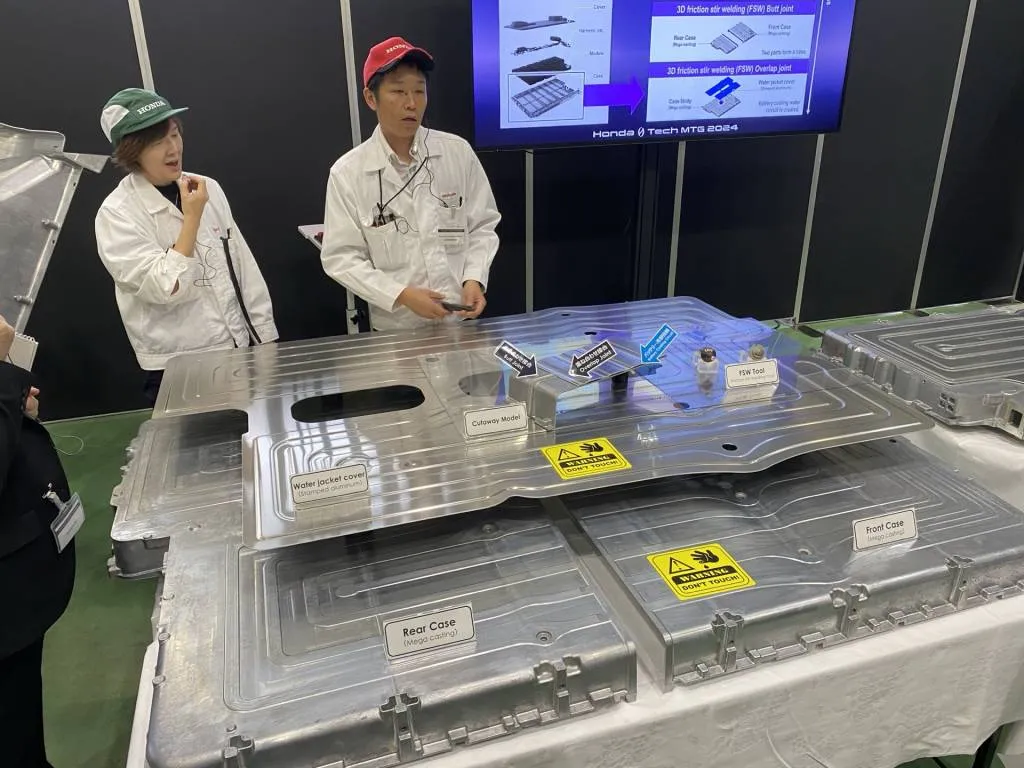
Honda 0 Sequence platform – battery pack
Additional, after the short zip-zip of a robotic trimming course of, a brand new course of referred to as friction stir welding will bond the pack’s items, assuring exact cooling channels. All of it seems prepared for the mass-production ramp.
Honda has deliberate for a semi-automated flex-cell manufacturing system that enables it to be particularly fast to change its mixture of battery pack sizes based mostly on automobile demand. Honda anticipates that roughly 75% of 0 Sequence EVs could also be medium-size, whereas 1 / 4 shall be large-size.
0 Sequence to be made in Ohio, alongside gasoline automobiles
And that underscores an essential level: The 0 Sequence EVs are engineered, regardless of their variations, to be assembled side-by-side in Ohio with Honda’s ICE automobiles, as a part of a semi-automated meeting line.
Honda additionally plans to mega-cast even bigger aluminum rear physique modules for 0 Sequence EVs inside a number of years—probably beginning in 2028 in its Canadian plant. It’s additionally using CDC (fixed direct present chopping) becoming a member of expertise that Honda has labored out particularly for this physique body and its alloy kind, permitting much less power and a stronger weld.
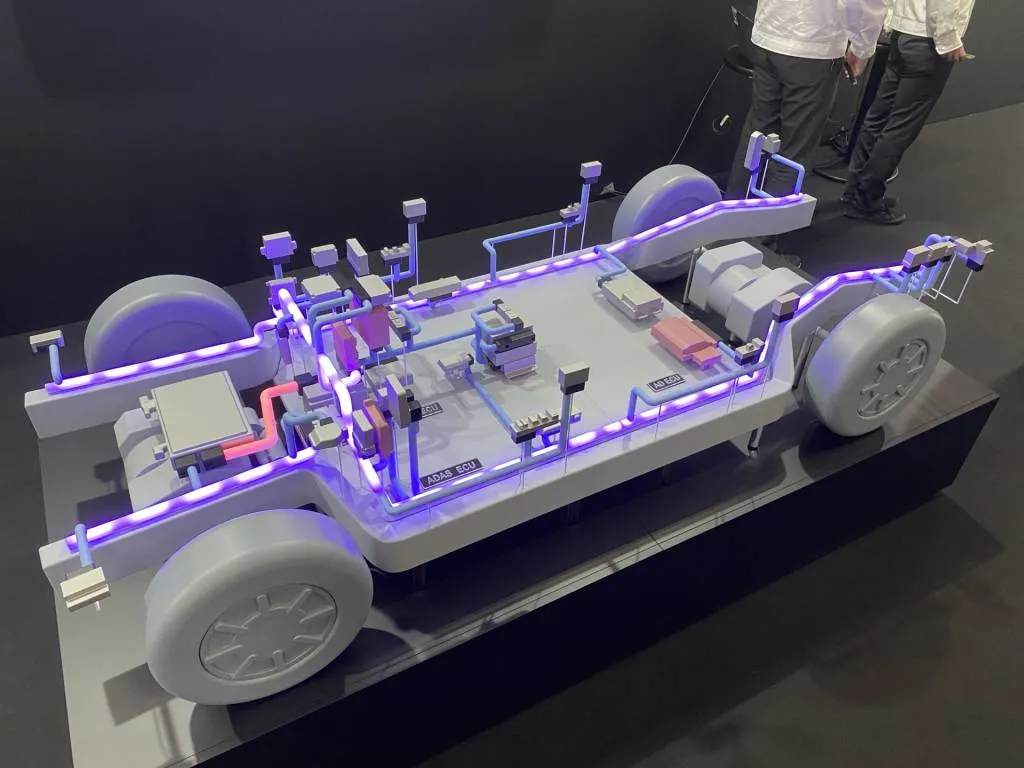
Honda 0 Sequence platform
The 0 Sequence will run on a brand new Honda electrical and electronics structure, corresponding to 3 ECUs: security and autonomous driving for the primary; dynamics, physique electronics and power administration for the second; and the digital UX for the third. It’s planning a complicated summon function, in addition to an extended-reality (XR) function that enables buddies or household to hitch you for a digital trip.
Excessive-precision detection will embrace lidar sensing, sensor fusion for long-range detection and evening driving, and proprietary AI, Honda says, with plans to supply Degree 3 driver help options. It is not going to be restricted to mapped roads, and it says the system would be the world’s quickest for “all space eyes off” operation ultimately, at an additional level within the 0 Sequence lifecycle.
Getting a totally electrical sedan that actually feels as low and nimble stays a problem. But Honda believes it will possibly produce a low, lengthy, and vast automotive and two SUVs in 2026, a 3-row SUV in 2027, a pair extra SUVs in 2028 and 2029, and a compact sedan in 2030, all on the 0 Sequence electrical platform.
If it will possibly push these alongside, exhibiting that what’s beneath isn’t the limiting issue, that’s fairly the place to begin.


